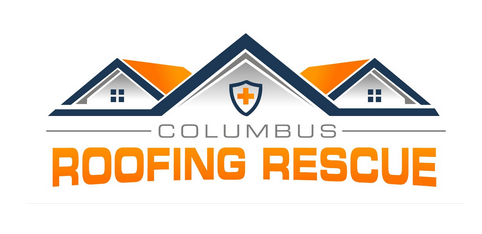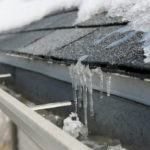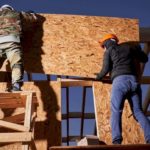
10 Most Dangerous Jobs in America
As a society, we owe much to the people who put themselves in danger daily to do their jobs. Several professions require individuals to work in hazardous conditions, from firefighters to construction workers. In this article, I will explore America’s top 10 most dangerous jobs and what makes them so risky.
What Makes a Job Dangerous?
A dangerous job is defined as one that involves a very high risk of injury or death. These jobs often require workers to operate heavy machinery, work at great heights, or handle hazardous materials. In addition to physical risks, these jobs can also affect workers’ mental health, causing stress, anxiety, and other psychological issues.
Top 10 Most Dangerous Jobs in America
1. Logging Workers: Logging is one the most dangerous occupations in America, with a fatality rate of 97.6 deaths per 100,000 workers. This job involves felling trees, operating heavy machinery, and working in remote areas with limited access to medical care.
2. Fishers and Fishing Workers: Fishers and fishing workers have a fatality rate of 77.4 deaths per 100,000 workers. This job involves working in rough seas, handling heavy equipment, and navigating unpredictable weather conditions.

3. Aircraft Pilots and Flight Engineers: With a fatality rate of 58.9 deaths per 100,000 workers, aircraft pilots and flight engineers face many risks, including mechanical failure, poor weather conditions, and pilot error.
4. Roofers: Roofers have a fatality rate of 51.5 deaths per 100,000 workers. Roofing involves working at great heights, handling heavy materials, and working with power tools and machinery.
5. Refuse and Recyclable Material Collectors: Refuse and recyclable material collectors have a fatality rate of 44.3 deaths per 100,000 workers. This job involves operating heavy machinery, handling hazardous materials, and working close to traffic.
6. Structural Iron and Steel Workers: Structural iron and steel workers have a fatality rate of 37 deaths per 100,000 workers. This job involves working at great heights, handling heavy materials, and operating heavy machinery.

7. Truck Drivers and Sales Workers: Truck drivers and sales workers have a fatality rate of 26.9 deaths per 100,000 workers. This job involves driving long distances, often in hazardous weather conditions, and handling heavy equipment.
8. Farmers, Ranchers, and Other Agricultural Managers: Farmers, ranchers, and other agricultural managers have a fatality rate of 24.7 deaths per 100,000 workers. This job involves working with heavy machinery, handling hazardous materials, and working close to livestock.
9. Grounds Maintenance Workers: Ground maintenance workers have a fatality rate of 21.0 deaths per 100,000 workers. This job involves working with heavy equipment, handling hazardous materials, and working near traffic.

10. Construction Laborers: Construction laborers have a fatality rate of 17.4 deaths per 100,000 workers. This job involves working at great heights, handling heavy materials, and operating heavy machinery.
The Deadliest Jobs in the World
While the United States has relatively strong safety regulations to protect workers, many jobs worldwide are even more dangerous. For example, the mining industry in countries like China and India is notoriously hazardous, with a high incidence of accidents and fatalities.
Risks and Hazards Associated with Each Job
Each of America’s top 10 most dangerous jobs is associated with a unique set of hazards. For example, loggers risk being struck by falling trees or crushed by heavy machinery. Fishers and fishing workers risk drowning or being lost at sea. Aircraft pilots and flight engineers risk mechanical failure or pilot error. Roofers risk falling from great heights, while refuse and recyclable material collectors risk being struck by passing vehicles. Structural iron and steel workers risk losing from great heights or being struck by heavy materials. Truck drivers and sales workers risk being involved in traffic accidents. At the same time, ranchers, farmers, and other agricultural managers risk being injured by heavy machinery or attacked by livestock. Ground maintenance workers face the risk of being struck by heavy equipment or being exposed to hazardous chemicals. Finally, construction laborers risk being injured by falling objects or being caught in machinery.
Safety Measures and Precautions Taken by Employers
Employers in these industries must take specific safety measures and precautions to protect their workers. For example, logging companies must provide workers with protective gear and ensure that machinery is properly maintained. Fishers and fishing companies must supply their workers with proper safety equipment and training. Aircraft manufacturers must adhere to strict safety regulations and maintain planes properly. Roofing companies must provide their workers with fall protection equipment and ensure they are appropriately trained to use it. Refuse and recyclable material companies must supply their workers with proper safety equipment and training to avoid being struck by passing vehicles. Structural iron and steel companies must provide workers with fall protection equipment and thoroughly train them. Trucking companies must abide by strict safety regulations and adequately train and equip their drivers. Agricultural companies must provide workers with proper safety equipment and training to avoid being injured by heavy machinery or livestock attacks. Ground maintenance companies must supply workers with adequate safety equipment and training to avoid being struck by heavy equipment or exposed to hazardous chemicals. Finally, construction companies must provide their workers with appropriate safety equipment and training to avoid being injured by falling objects or being caught in machinery.
The Impact of Dangerous Jobs on Workers’ Physical and Mental Health
Working in a dangerous job can seriously affect workers’ physical and mental health. Exposure to hazardous materials, long hours, and high-stress levels can lead to several health problems, including respiratory issues, back pain, and mental health disorders like depression and anxiety. In addition, workers in dangerous jobs are at a higher risk of injury and death, which can devastate their families and loved ones.
Compensation and Benefits for Workers in Dangerous Jobs
Workers in dangerous jobs often receive higher compensation and benefits to compensate for the risks they face. For example, loggers and fishers earn a higher salary than workers in other industries, while truck drivers and sales workers often receive bonuses for meeting specific performance metrics. In addition, many employers offer health insurance, retirement benefits, and other perks to help attract and retain workers in these high-risk professions.
Opportunities for Education and Training in High-Risk Professions
Despite the risks associated with these jobs, many individuals choose to pursue careers in high-risk professions. To help prepare these individuals for the challenges they will face, several education and training programs are available. For example, logging companies may offer apprenticeships to teach workers how to fall trees and operate heavy machinery safely. Fishers and fishing companies may provide training programs to teach workers how to navigate rough seas and handle fishing equipment. Similarly, construction companies may offer apprenticeships or training programs to teach workers how to operate heavy machinery and work at great heights safely.
Conclusion – Why Understanding the Risks of Dangerous Jobs is Important for Everyone
While the risks associated with dangerous jobs may seem somewhat daunting, it is crucial to remember that they are essential to our society and economy. By understanding the hazards and risks associated with these jobs, we can work to improve safety regulations and reduce the number of accidents and fatalities. In addition, we can work to provide better compensation and benefits for workers in high-risk professions and support education and training programs to help prepare individuals for these challenging careers.
By learning about the risks associated with these jobs, we can all work together to create a safer, more supportive workplace for everyone.



